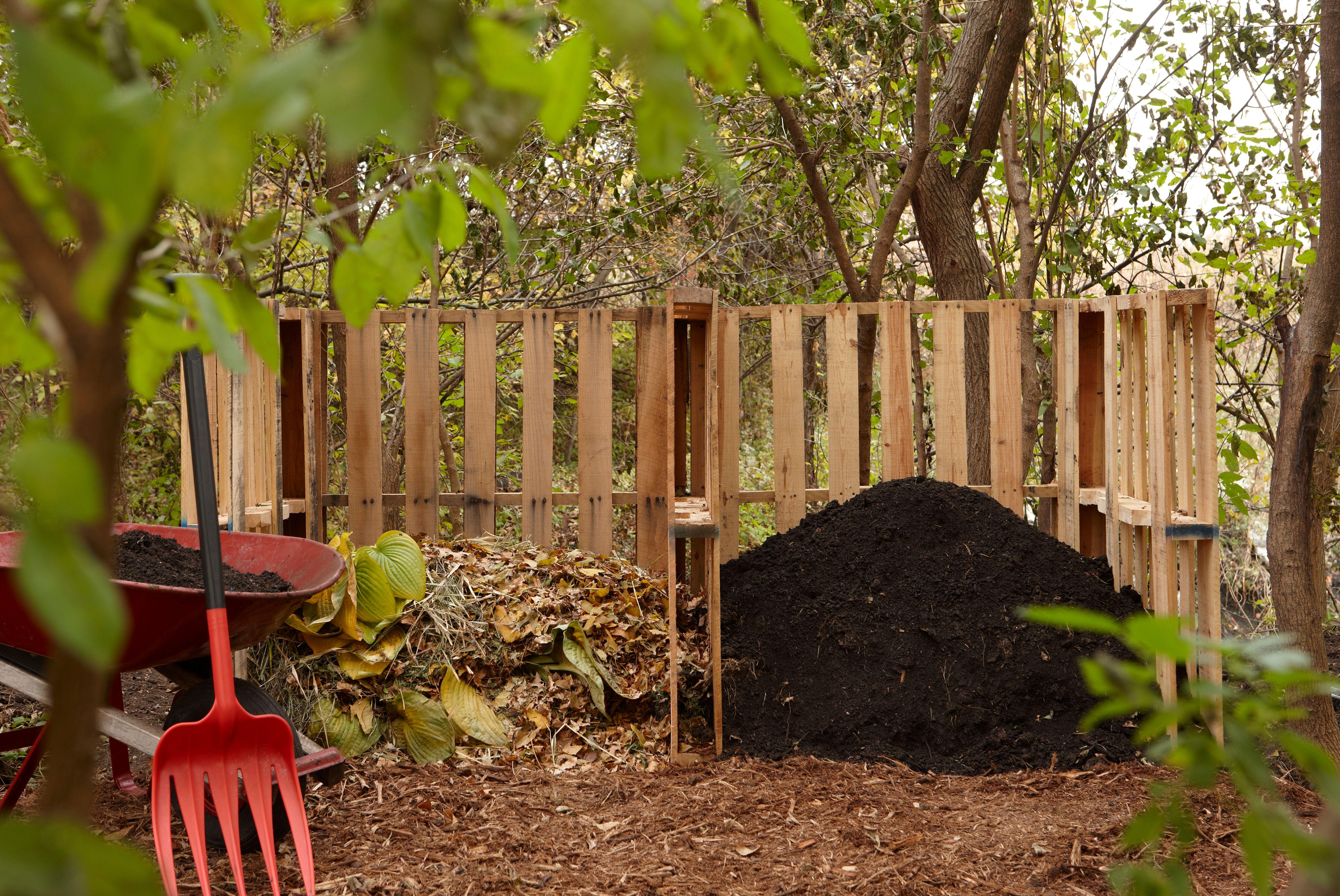No one wants to lug heavy piles of yard waste to an out-of-the-way compost bin—especially in the dead of winter. However, locating composters too close to homes or in other inappropriate locations can potentially lead to even worse issues, such as unpleasant odors and soggy compost. Whether you have an indoor or outdoor composter, here’s how to determine if a location is suitable for composting, along with tips for selecting the perfect spot for your compost bin.
1. Pick a Convenient Spot
One of the most important factors to consider when selecting a site for composting is how you intend to use the compost bin and harvest the finished compost. You’ll be much more likely to use your composter regularly if you locate it in a spot that’s easily accessible in any season.
Indoor composting: When using a bokashi system or vermicomposting bin, consider situating the composter near your kitchen or under the kitchen sink. This location makes it much easier to dispose of food waste and monitor the composting process. Indoor composting systems should not produce any unpleasant odors as long as they’re properly managed.
Outdoor composting: Select a location that is convenient for depositing composting ingredients and harvesting finished compost. It can be near your kitchen door if you primarily compost kitchen scraps or closer to your garden if you mostly compost yard waste and create large volumes of compost that you don’t want to transport far.
2. Make Sure It’s Level
Composting locations don’t need to be perfectly level, but selecting a spot that doesn’t have any significant inclines or depressions makes compost piles much easier to manage. Not only do slopes destabilize compost bins and piles, making compost more likely to tumble around, but uneven surfaces can also create drainage issues, resulting in soggy compost and an unpleasant odor. Additionally, maneuvering a heavy wheelbarrow full of yard waste and compost up and down a hill is significantly more challenging than moving a wheelbarrow across a level surface.
3. Consider Lighting
Outdoor composting systems depend on beneficial microbes to break down yard waste and kitchen scraps into finished compost. However, if compost bins are located in too much sun or shade, evaporation rates and composting temperatures can fluctuate so wildly that beneficial microbes won’t thrive. That’s why it’s best to situate composters in partly shaded locations where temperatures are stable and to keep open compost piles covered with a lid or tarp.
Indoor compost bins are generally more flexible than outdoor bins when it comes to lighting. However, even indoor systems should not be placed in direct sunlight. Worm bins, in particular, can become too hot in sunny spots and prove hazardous to the composting worms.
Related
4. Avoid Poorly Draining and Windy Areas
Keeping composters out of low-lying areas should help alleviate some drainage issues, but it’s still essential to avoid composting in any location that remains soggy throughout the year. Composting in overly wet areas can slow down the composting process and lead to smelly compost.
Locations that are exposed to strong winds can also be challenging to compost in and should be avoided if possible. Harsh winds can dislodge composting ingredients from open piles and send compost bins, lids, and tarps flying.
5. Keep a Water Source Handy
As with soggy compost, overly dry compost piles don’t break down well and can halt the composting process altogether. The best way to avoid this is to add plenty of nitrogen-rich kitchen scraps to your composter and to locate compost bins near a water source, allowing you to add water as needed. For proper composting, keep compost piles about as damp as a wrung-out sponge.
6. Leave Some Space
While it can be tempting to squeeze a compost bin into a small corner of your garden, it’s important to leave some space around the composter. This extra space makes it much easier to turn and harvest compost, allowing you to expand your composting system with additional bins later on.
If you’re processing large volumes of yard waste and making a lot of compost quickly, leave enough space around your composter to maneuver a wheelbarrow or tractor around the bin.
7. Consider Your Neighbors
Well-managed compost piles should have a slightly earthy smell and not produce any unpleasant odors. Still, it’s a good idea to check local regulations about composting before you start and to keep compost bins away from property lines in case your neighbors aren’t as enthusiastic about composting as you are.
If you’re worried about the aesthetics of outdoor composting, investing in an enclosed compost bin or tumbler is a solution. These composting systems blend into landscapes better than open compost piles and are less likely to attract pests. It is also helpful to leave some space around your compost pile for trellising, arbors, or tall shrubs and perennials that can conceal it.



